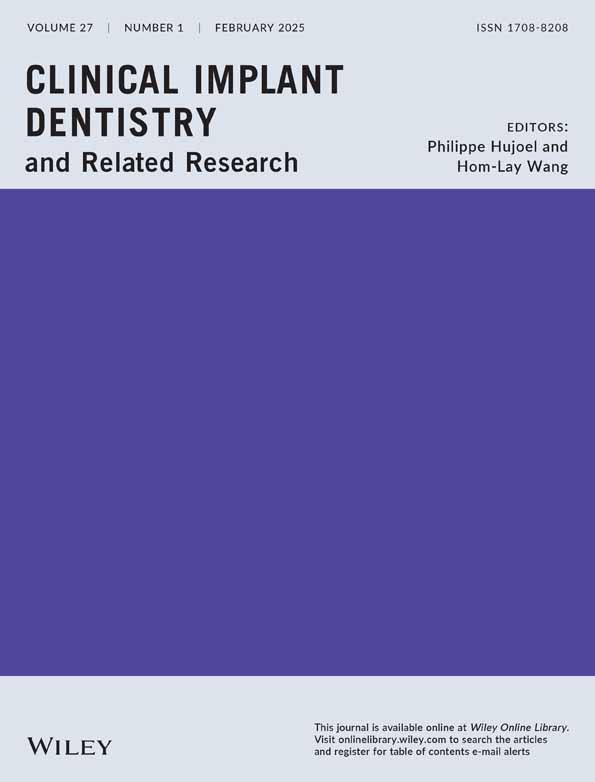Exploring the Learning Curve of Dental Implant Placement Using a Task-Autonomous Robotic System Among Young Dentists From Different Specialties—A Pilot Module Study
Funding: This work was supported by the grants/awards of Shanghai's Top Priority Research Center (2022ZZ01017); Clinical Research Plan of SHDC (SHDC2020CR3049B); CAMS Innovation Fund for Medical Sciences (CIFMS) (2019-I2M-5-037); Combined Engineering and Medical Project of Shanghai Jiao Tong University (YG2021QN72); Horizontal Project of the National Center for Clinical Research of Oral Diseases (KQHX2022-07) and the International Team for Implantology (1781–2023).
ABSTRACT
Background
The learning curve effect of dynamic computer-assisted implant surgery (D-CAIS) was observed among inexperienced novice surgeons. The learning curves can provide valuable information for novice surgeons and valid comparisons between new and conventional techniques. Recently, robotic computer-assisted implant surgery (R-CAIS) has shown promise as a novel dental implant surgical technique for both partially and edentulous patients. However, its learning curve remains unknown.
Purpose
The aim of this study was to explore the learning curve of dental implant placement surgery with a task-autonomous robotic system among young dentists with different specialties.
Methods and Materials
Four young dentists (mean age: 25.3 ± 1.5 years at the beginning of their first attempt) with equal representation of males and females and with different specialties participated in this study. None of the participants had prior experience in R-CAIS. Each operator placed eight implants over eight attempts using a semi-active task-autonomous robotic system. Among the eight implants, four were straight lateral incisor implants, and four were 30°-tilted premolar implants. The implants were placed in each dental quadrant of the maxillary and mandibular jaw modules. The operation time was recorded. Coronal, apical, and angular deviations between the planned and actual sites of implant placement were measured by merging preoperative and postoperative cone-beam computed tomography (CBCT) scans. The data were analyzed with repeated-measures ANOVA (α = 0.05).
Results
The mean time for implant placement was associated with the number of attempts (p < 0.01). The time taken for the second attempt was significantly shorter than that of the first attempt (33.26 vs. 30.47 min; p < 0.001) then it plateaued. Three-dimensional (3D) angular (p = 0.31), coronal deviation (p = 0.26), and apical deviation (p = 0.06) did not differ significantly among attempts. The mean values and standard deviations of 3D coronal deviation, 3D apical deviation, and 3D angular deviation were 0.71 ± 0.31 mm, 0.72 ± 0.30 mm, and 0.94 ± 0.58°, respectively. Neither the position of the jaw (p > 0.59) nor the tilt angle of the implant (straight or 30°-tilted, p > 0.85) was related to implant placement accuracy.
Conclusions
Dentists quickly learned the basic workflow of R-CAIS and thus facilitated the clinicians in the mastery of implant placement on edentulous jaw modules, leading to a comparable operating speed and high precision. Moreover, the accuracy of placement of straight and tilted implants in both the maxilla and mandible with R-CAIS was satisfactory.
Conflicts of Interest
The authors declare no conflicts of interest.
Open Research
Data Availability Statement
The data that support the findings of this study are available from the corresponding author upon reasonable request.




